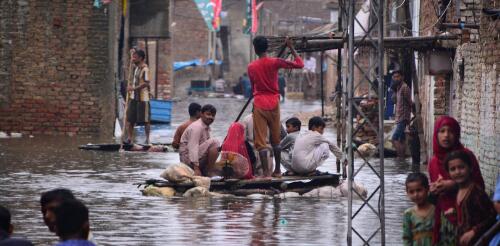Reparations
Museums often celebrate new acquisitions, especially something rare or historic. In April 2024, scientists from the Natural History Museum of Jamaica and The University of the West Indies, Mona Campus accepted a very rare and historic specimen: a 16-inch lizard called the Jamaican giant galliwasp (Celestus occiduus). It had previously been stored in the Hunterian museum at the University of Glasgow in Scotland. “‘Celeste’ is home!” announced one Jamaican news outlet, invoking the nickname scientists had given the reptile, which they believed was a female. A close-up of ‘Celeste,’ the Jamaican giant galliwasp specimen repatriated to Jamaica. Jane Barlow/PA Images via Getty Images Why would a preserved lizard, some 170 years old, evoke such excitement? Celeste was collected in the 1850s and represents a species that was endemic to Jamaica but is now classified as cri...
As wars grind on in Ukraine and Gaza, another location ravaged by conflict is taking steps to implement a historic peace agreement. From the mid-1960s through 2016, Colombia was torn by conflict between the government, leftist guerrilla movements and right-wing paramilitary groups. Now the government and rebels are working to carry out a sweeping accord that addresses many critical sectors, including environmental damages and restoration. University of Notre Dame researchers Richard Marcantonio and Josefina Echavarria Alvarez study peace and conflict issues, including their effects on the environment. They currently are advising negotiations between the Colombian government and several rebel factions over wartime damage to soil, water and other natural resources. They explain that while Colombia’s transition from war to peace has been difficult, the accord offers a model for addressing the ravages of war in places such as Gaza and Ukraine. Is it common for peace settlement...
You may be hearing the phrase “loss and damage” in the coming weeks as government leaders meet in Egypt for the 2022 U.N. Climate Change Conference. It refers to the costs, both economic and physical, that developing countries are facing from climate change impacts. Many of the world’s most climate-vulnerable countries have done little to cause climate change, yet they are experiencing extreme heat waves, floods and other climate-related disasters. They want wealthier nations – historically the biggest sources of greenhouse gas emissions – to pay for the harm. A powerful example is Pakistan, where extreme rainfall on the heels of a glacier-melting heat wave flooded nearly one-third of the country in the summer of 2022. The flooding turned Pakistan’s farm fields into miles-wide lakes that stranded communities for weeks. More than 1,700 people died, millions lost their homes and livelihoods, and more than 4 million acres of crops and orchards,...


